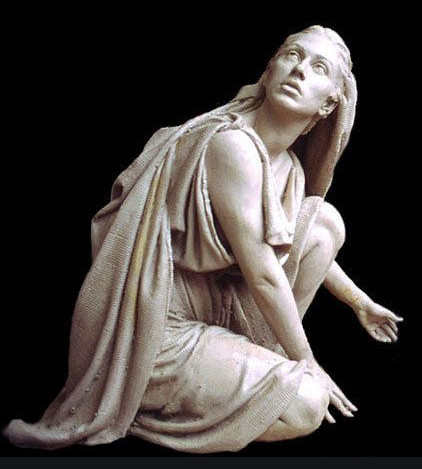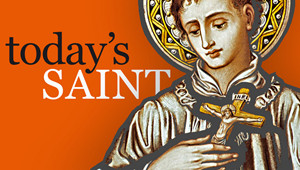Each year the Church invites us to bring the heart-aches of our lives, our own personal broken dreams and moments of sorrow and pain to the Risen Christ. During Holy Week we relive the final days of the Savior in order to reinforce our conviction that resurrection always follows death, that victory always crowns our failures. This is the vision that we celebrate on Easter Sunday: a way of life which continues to offer renewed vision and hope to the human family.
 But it is difficult to believe without fear and anxiety. Easter faith springs from something deeper and perhaps this is best exemplified by Mary Magdalene in the resurrection account we hear today.
But it is difficult to believe without fear and anxiety. Easter faith springs from something deeper and perhaps this is best exemplified by Mary Magdalene in the resurrection account we hear today.
Magdalen goes to the tomb "on the first day of the week, early in the morning." The tragic events of Jesus’ death were still fresh in her mind and she just wants to be as close as possible to the Jesus she loved - and to do so as quickly as possible. She goes to his tomb "while it was still dark." In John’s Gospel darkness suggests an absence of faith, of not being able to see with clear vision. It’s the dawning of a new day, but for Mary and, later, the disciples, it is still dark.
Mary arrives and sees an empty tomb. Unlike the resurrection story in the Synoptic gospels, in John's account there are no heavenly messengers waiting there for them when they arrive, just an empty tomb with the burial cloths neatly folded in a separate place. She comes to the logical conclusion: “They have taken the Lord from the tomb and we don’t know where they put him.” She rushes back to tell Peter and John of her discovery, who now race to the tomb themselves.
But today’s gospel is only half of the story. If we like mystery stories neatly packaged with no loose ends, then we can’t help but be somewhat dissatisfied with the inconclusive account that we have today. The two disciples see the empty tomb, do not fully understand, and then just return to the other disciples. (The story actually continues in the very next passage of the Gospel. Mary will remain, meet Jesus, think he is the gardener and then discover he is the risen Lord when he calls her name. It seems a little strange that these few additional verses were not included in today's reading)
But maybe that's the point.
Mary's faith was born of love, which opened her eyes to see and recognize the risen Lord. It was different for the others. It was still difficult for them to truly believe the stories they were hearing. It was still hard to bring themselves - as much as they wanted to - to believe that the Lord had truly risen, as He said He would. Even when they saw Him, they weren't sure.
But Magdalene got the message. She saw with the eyes of faith and believed. Maybe that is how we come to see the risen Christ. Without seeing him we believe Christ is alive and with us. We meet him when we worship with others who are witnesses to his life. We have our eyes opened to the risen Christ when the words of Scripture touch our hearts. We come to know him in the breaking of the bread and the pouring of the cup. And we also meet him where he has told us he can be found - in the needy, the outcast, the stranger, the exiled and abused.
Our belief in the Risen Christ lies within those who give of themselves in the service of others. Our proof is seen in the lives of those men and women who quietly and continuously work for human justice and peace, who are willing to lay down their lives for their brothers and sisters, who embrace suffering and death with open arms - not as a final statement of courage, but as one of total self-giving into the new life of Christ.
The evangelists never describe Jesus’s resurrection. They leave us a blank canvas. But they do this with the confidence that through a faith born of love we can fill the picture in. The challenge of Easter is to believe that God will do for us what God did for Jesus. The challenge of Easter is to trust that God’s power is greater than the power of evil and that God’s love is stronger than death.





